A Better Alternative: Driving Electric
Change is hard. As much as we like to pretend we are malleable creatures, we have our habits and tend to stick to them. We get up around the same time, get tired at the same time, eat food on a regimented schedule and drive to work and home again the same way every time. Often, that drive home requires a stop at the gas station. But, what if you didn’t have to fill up your tank after work each day? What if you could simply plug your vehicle in at home in the evening or reduce your number of stops at the gas station? Yes, electric vehicles are different. They sound different; they usually look different, and they require a slight change in your routine.
Electric vehicles fall into the electric drive vehicle category, which is any vehicle that uses electricity as either its primary fuel or in collaboration with a conventional engine to help improve efficiency. They are more fuel efficient than gasoline-powered vehicles and have the ability to use little-to-no gasoline. This type of vehicle helps reduce tailpipe emissions and greenhouse gases in the air we breathe and that negatively affect our environment and health.
Electric drive vehicles are similar to conventional vehicles in many ways. They both have similar driving options with plenty of space for passengers and cargo. And, all vehicles are required to meet the same safety standards as conventional vehicles. However, electric drive vehicles also differ from conventional ones in a few major ways. For instance, they emit very little sound, can accelerate quickly, are highly efficient and contain sophisticated dashboard screen displays to provide drivers with more information and control. Electric drive vehicles have fewer moving parts and often require less maintenance.
Types of Electric Drive Vehicles
Electric drive vehicles come in four basic types and not all of them require an outlet for charging. Two types – Battery Electric Vehicles (BEV) and Plug-in Hybrid Electric Vehicles (PHEV) – have a battery that charges by plugging into an electrical outlet. For these two, also known as Electric Vehicles (EVs), the battery is what provides the power that moves the vehicle’s wheels. The other two types of electric drive vehicles are Hybrid Electric Vehicles (HEVs) and Fuel Cell Electric Vehicles (FCEVs).
A Battery Electric Vehicle runs purely on electricity. It has the largest batteries and a limited range of approximately 80 to 100 miles. As public charging infrastructure develops, many areas will have sufficient locations for electric vehicles to charge when necessary, which will alleviate most concerns about driving range. If you have a predictable commute and access to a second car for long trips, a battery electric vehicle would be a good choice.
A Plug-in Hybrid Electric Vehicle has an electric-only range of 10–40 miles, but a gasoline engine aids vehicle range so it can achieve higher speeds and loads. After exceeding the electric-only range, the vehicle continues to operate using the gasoline engine. PHEVs provide a worry-free transition to electrically powered vehicles because they eliminate concerns about running out of battery power. If you only have one car, or if you often drive long distances, a plug-in hybrid would be a good electric vehicle choice.
Hybrid Electric Vehicles utilize gasoline engines as their main power source, but they also incorporate a high-voltage battery to increase overall vehicle efficiency. It is not necessary to plug an HEV into an electric outlet in order to charge the battery. Instead, it charges its high-voltage battery by capturing excess electricity through regenerative braking and power from the engine.
Fuel Cell Electric Vehicles use hydrogen gas (other fuels are being researched) to power the fuel cell that generates the electricity, which propels the vehicle. FCEVs do not require large batteries because they are not plug-ins.
Electric Vehicle Infrastructure
No special infrastructure is required for HEVs and FCEVs. However, if you are sold on plugging your vehicle in at home instead of stopping by a gas station, you will need access to a well-developed EV infrastructure. This is an essential component of “fueling” electric vehicles because of the need to have convenient access to charge your EV at home, work or in public places. EV infrastructure is a carefully planned, safe electrical network for vehicle charging. EV owners will be able to charge at public, commercial, municipal and workplace locations as forward-looking retailers, employers and governments provide charging stations for their environmentally conscious consumers, employees and residents. By 2018, it is projected that there will be nearly as many public charging stations as gas stations.
Electric Vehicle Supply Equipment (EVSE) refers to fixtures installed and used specifically to deliver electricity from a designated power source to charge the vehicle’s high-voltage battery. An EVSE unit – mounted to a wall, pole, pedestal or ceiling and connected to an external power source – has installation requirements specific to the charging location. A qualified electrician is required to install the unit, which can be in a private or public location like a residential home or driveway, or public or employee parking lot. Connected to the EVSE unit are the EV cord and EV connector (a plug), which safely transfer electricity to the vehicle’s inlet. During energy transfer, this cord also sends communication signals to ensure safe conditions while charging. The EV connector and EV inlet are standardized among manufacturers.
EVSE & Levels of Charge
EVSE is classified into three different levels of charge – Level 1, Level 2 and Level 3. The rate at which EVSE adds electric vehicle driving range or miles depends on the vehicle, battery type and EVSE’s level of charge. Time needed to charge the battery fully also depends on type of car, size and type of battery, and even weather.
Level 1 Charging
Level 1 EVSE provides charging through a 120-volt alternate current (AC) receptacle, which is typical in homes. However, a dedicated circuit is required. Most PHEVs and BEVs come with a Level 1 EVSE portable cord set, which consumers usually keep with the vehicle. The Level 1 charging unit requires no additional charging equipment and is useful when running low on charge and an outlet is available.
To use the Level 1 EVSE, take the end of the cord (a standard three-prong plug) and plug it into a 120-volt receptacle. Take the other end of the cord (EV connector) and plug into the EV inlet located on the vehicle. The Level 1 charging (depending on the battery) rate-of-charge typically adds about 2 to 5 miles of driving range for every hour of charging time. People primarily use Level 1 charging when Level 2 or 3 is not available.
Level 2 Charging
Level 2 EVSE provides charging through a 240-volt AC unit – the level of power needed for a clothes dryer — which is also available in most homes.
Users can hardwire the Level 2 unit or plug it into a 240-volt outlet. To charge the vehicle, take the cord attached to the EVSE unit and plug the connector into the vehicle.
This unit can easily charge a typical electric vehicle’s battery overnight since the rate-of-charge adds 10 to 20 miles of driving range for every hour of charging time.
This type of charging is typically used while at home or in public locations.
Level 3 Charging
Level 3 charging, commonly referred to as “DC” or “Fast Charging,” is not currently compatible with most vehicles, homes or businesses. Level 3 EVSE provides off-board charging through 480-volt to 600-volt direct current (DC). This system bypasses the plug-in vehicle’s on-board charger and supplies it with a fast and reliable DC charge in minutes instead of hours. A full charge, for instance, typically takes less than 30 minutes with the exact voltage and load specifications for Level 3 charging varying with manufacturer. Requiring little recharging downtime, Level 3 is ideal for public charging since drivers can access the charging station and completely charge their vehicle while at lunch or shopping.
EV Charging & Cost Savings
Electric vehicles adhere to all safety features standard for conventional vehicles. However, additional safety features are built into the electric vehicle and charging equipment to prevent electrical hazards. For example, the EV cord is not “live” while the driver is handling it. A connection between EV connector and inlet is required before the electrical current turns on. The electric vehicle will also immediately stop charging if it detects a very low amount of electrical current leakage. This prevents the possibility of a shock. The inlet and charging equipment are required to be safety tested, certified and listed by Underwriter’s Laboratory.
Utility Companies. Most utilities prefer EV owners to charge electric vehicles at night during “off-peak” hours. This is because daytime demand for electricity is higher and more expensive. As utility companies become more familiar with EV charging, some may offer specific rates or off-peak discounts, or they may require a separate meter. Most utilities currently require certification that you own an electric vehicle.
Cost Savings. The amount saved driving an electric vehicle depends on electric rates and gasoline prices. In the United States, the average utility company charges 12 cents per kilowatt-hour. At this rate, charging an electric vehicle would cost about $4 per 100 miles. Greater savings may be possible by taking advantage of lower electricity rates during “off-peak” hours.
Plug-in hybrid electric vehicles and battery electric vehicles purchased in or after 2010 may also be eligible for a federal income tax credit of up to $7,500. The credit amount will vary based on the capacity of the battery used to fuel the vehicle. Tax incentives also include the Alternative Fuel Vehicle Refueling Property credit, which allows eligible people to claim $1,000 in tax incentives for installation of a home electric car charging station. Some states offer tax incentives for electric vehicles as well.
Home Charging. The convenience of home charging is one of the most appreciated benefits of EV ownership. As mentioned, off-peak charging saves money while supporting the grid’s reliability and efficiency. Before purchasing an electric vehicle, have an idea of where to park the vehicle since you should consider placement of the EVSE unit in relation to the EV inlet on your vehicle. EVSE cords usually come in lengths of 15 to 25 feet and should safely connect from the EVSE unit to the vehicle.
Installing EVSE in a residential garage is the most common and simplest type of installation. The garage can provide security for the EVSE and protect it from the weather. Level 2 charging is the popular choice for garage installations. Similarly, a driveway is another common location for an EVSE installation. Installing a canopy over the EVSE will help protect it from severe weather conditions and placing a protective barrier around the unit will help prevent physical damage. Another caution to be aware of is the potential tripping hazard posed by the EVSE cord in the driveway. Use proper maintenance at all times in order to prevent falls and to reduce the risk of driving over it.
Conclusion
We depend on transportation and mobility to support our way of life. The modern vehicle has improved our standard of living, and it is an important factor in societal and economic development. To function, many vehicles rely on highly priced foreign oil, which causes a significant strain to both economy and energy security.
Today, however, we have an opportunity to innovate by purchasing alternative fuel vehicles. The US government has highlighted electricity as a promising alternative to petroleum-based fuels. Using it as a fuel source benefits the average consumer since the cost of electricity is less than gasoline. Electrification of passenger vehicles enables society to continue to use transportation with an emphasis on energy independence, economic sustainability and cleaner air to improve environmental and health conditions.










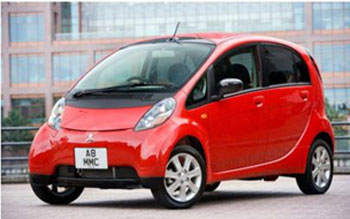
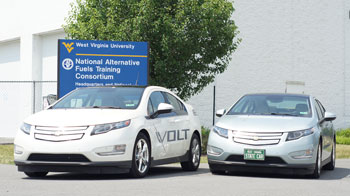
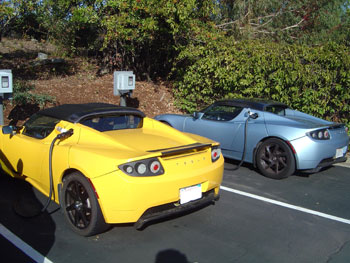
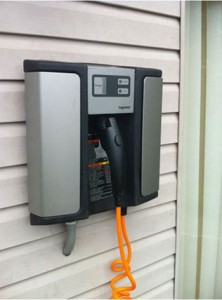
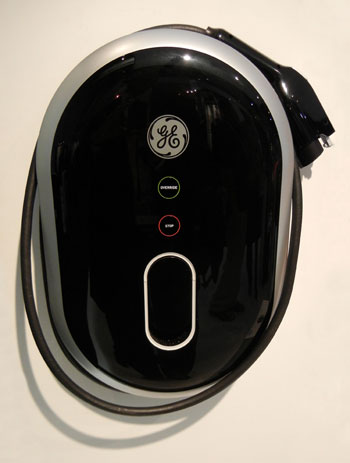
 About NAFTC
The National Alternative Fuels Training Consortium (NAFTC) is a pioneer and national leader in developing, managing and promoting programs and activities that help cure America’s addiction to oil, lead to energy independence and encourage greater use of cleaner transportation. A program of West Virginia University, NAFTC is the only nationwide alternative fuel vehicle and advanced technology vehicle training organization in the United States. Its mission is to provide the training infrastructure for implementing widespread use of alternative fuels, alternative fuel vehicles and advanced technology vehicles in an effort to increase the nation’s energy security and improve air quality. To learn more about electric vehicles and other alternatives to cleaner transportation, please visit NAFTC online at
About NAFTC
The National Alternative Fuels Training Consortium (NAFTC) is a pioneer and national leader in developing, managing and promoting programs and activities that help cure America’s addiction to oil, lead to energy independence and encourage greater use of cleaner transportation. A program of West Virginia University, NAFTC is the only nationwide alternative fuel vehicle and advanced technology vehicle training organization in the United States. Its mission is to provide the training infrastructure for implementing widespread use of alternative fuels, alternative fuel vehicles and advanced technology vehicles in an effort to increase the nation’s energy security and improve air quality. To learn more about electric vehicles and other alternatives to cleaner transportation, please visit NAFTC online at 

















